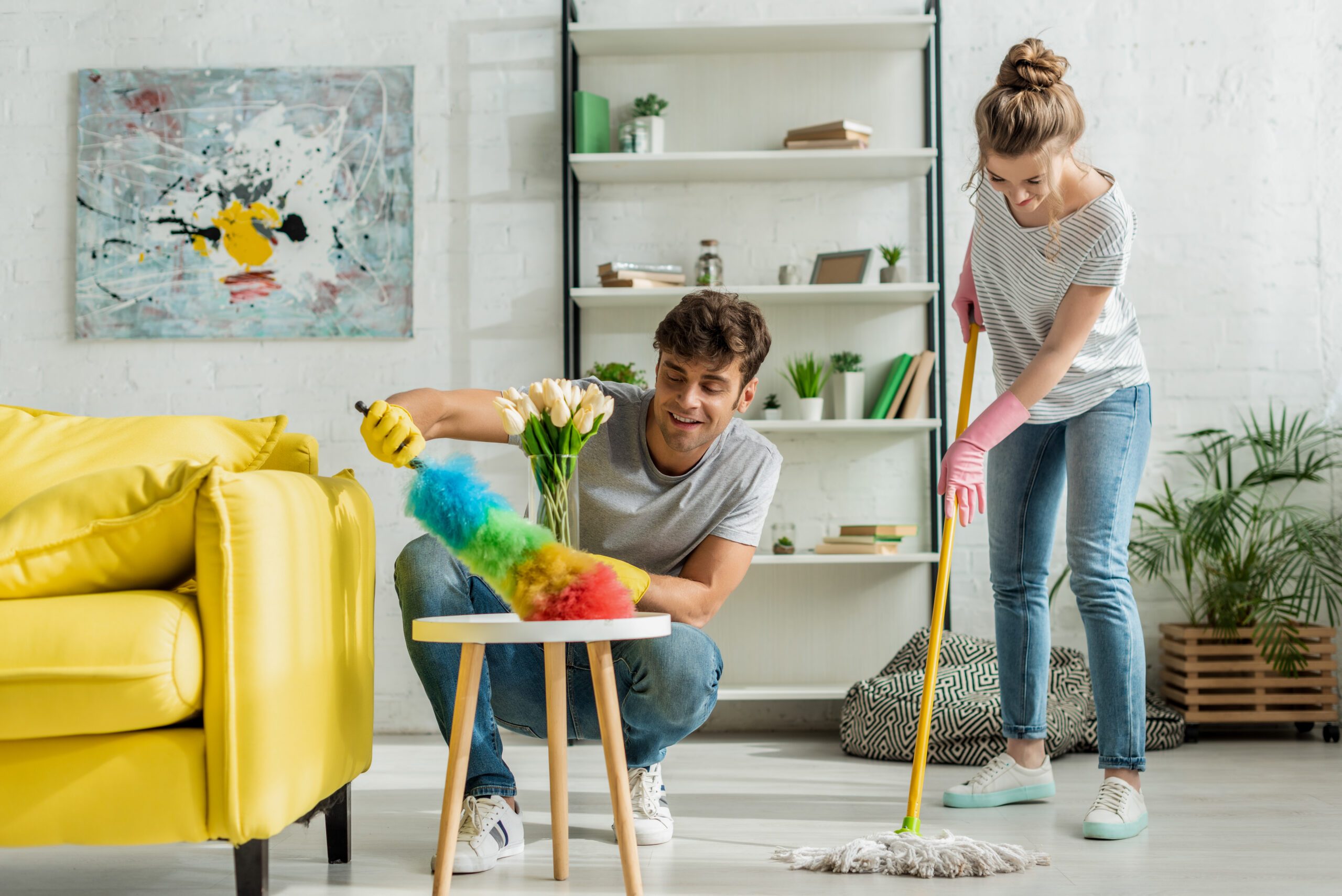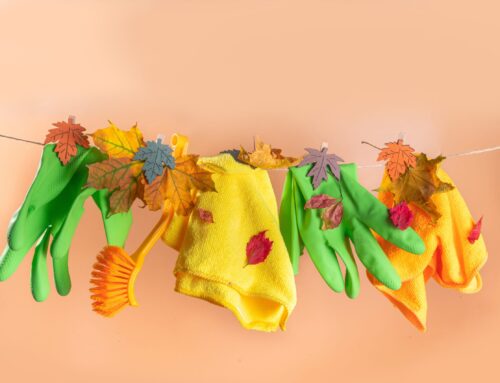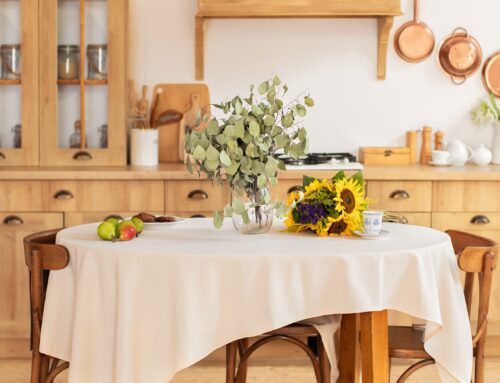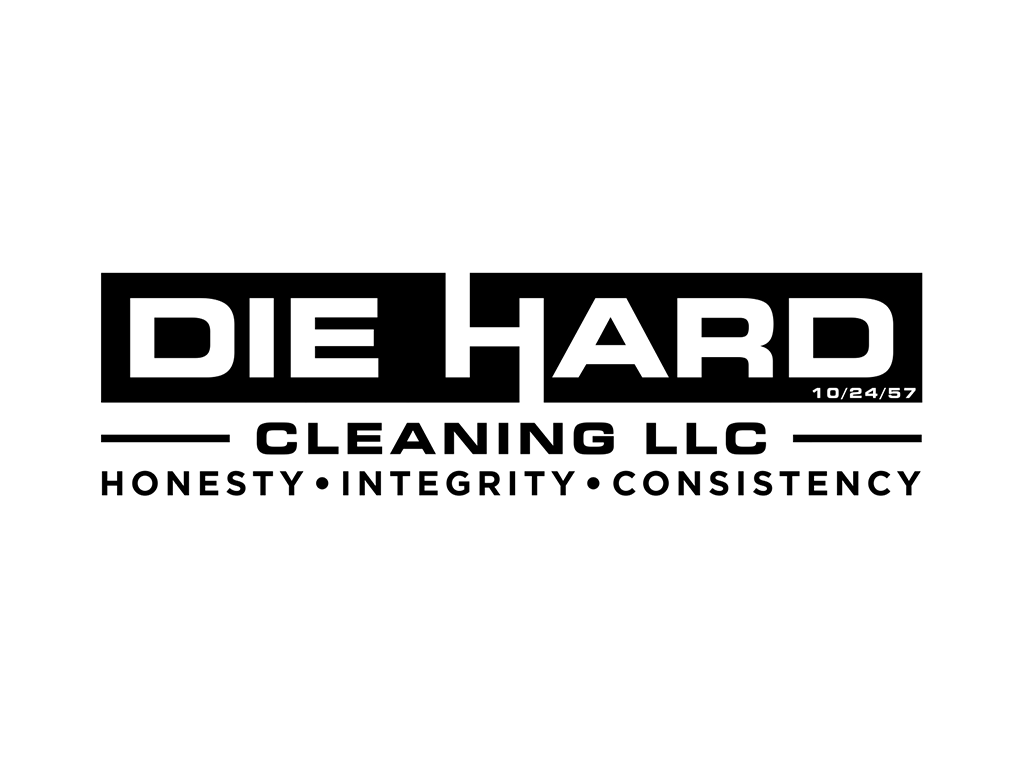Cleaning is one of those things we all have to do, but there’s a lot of misinformation out there about the best ways to keep our homes sparkling clean. From DIY hacks to old wives’ tales, it’s easy to get caught up in cleaning myths that don’t actually work—or worse, could be making things dirtier! At Die Hard Cleaning Services in Tallahassee, FL, we’ve seen it all, and today, we’re setting the record straight.
Let’s bust five of the most common cleaning myths and talk about what actually works to keep your space fresh, clean, and germ-free!
Myth #1: Vinegar Cleans Everything
The Truth: Vinegar is great—but not for everything!
Vinegar is often hailed as a miracle cleaner, and while it does have some impressive properties, it’s not the all-purpose solution many people think it is. Vinegar is an acid, which means it’s great for breaking down mineral deposits, cutting through grease, and eliminating odors. However, there are several surfaces where vinegar can actually do more harm than good:
- Granite & Marble Countertops – Vinegar can erode the sealant and damage the stone.
- Hardwood Floors – Over time, the acidity can strip the finish and dull the wood.
- Electronic Screens – It can damage protective coatings on TV, laptop, and phone screens.
- Cast Iron & Aluminum Cookware – The acid can cause corrosion, ruining the surface.
- Grout – It may weaken grout over time, leading to cracks and mold growth.
What Works Instead?
For stone countertops, stick to mild dish soap and water. For hardwood floors, use a specialized wood cleaner. And for screens, opt for a microfiber cloth slightly dampened with water.
Additionally, while vinegar can be useful in laundry as a natural fabric softener or odor remover, it should never be mixed with bleach. Combining vinegar and bleach creates toxic chlorine gas, which is highly dangerous. Instead, use vinegar for descaling kettles or coffee makers and as a safe deodorizer for garbage disposals.
Myth #2: Bleach is the Ultimate Cleaner
The Truth: Bleach disinfects, but it doesn’t actually clean!
Many people think that bleach is the ultimate cleaning solution because of its strong smell and powerful disinfecting properties. But here’s the catch: bleach doesn’t actually remove dirt and grime—it just kills bacteria and whitens surfaces.
If you use bleach without first cleaning the surface, you’re essentially just sanitizing over the dirt, not removing it. Furthermore, prolonged exposure to bleach can deteriorate certain materials, such as plastics and some metals, leading to damage over time.
Bleach also produces strong fumes, which can be harmful when inhaled. Many household cleaners mix bleach with ammonia-based products without realizing that this can create toxic gases that pose serious health risks.
What Works Instead?
Before disinfecting, always clean surfaces with soap and water to lift dirt and grease. Then, if you need to disinfect, use bleach correctly by diluting it with water (typically, a 1:10 ratio) and letting it sit for at least 10 minutes before wiping it off.
For areas where bleach is not ideal, hydrogen peroxide or alcohol-based disinfectants can be safer and just as effective alternatives. Consider using steam cleaning for hard surfaces, as it eliminates germs without harsh chemicals.
Myth #3: More Soap = Cleaner Surfaces
The Truth: Using too much soap can actually make things worse.
It’s a common belief that the more soap or detergent you use, the cleaner your dishes, clothes, or floors will be. In reality, using too much soap can lead to sticky residue buildup, making surfaces attract more dirt rather than repel it.
- Laundry – Excess detergent can cling to fabrics, making them stiff and causing skin irritation. It can also leave buildup inside the washing machine, leading to mold and mildew growth.
- Dishes – Too much soap can leave a film on your plates and glasses, which may leave an unpleasant taste and require extra rinsing.
- Floors – Overuse of soap can make floors slippery and prone to attracting dust and grime, leading to a dull, sticky finish.
- Carpets & Upholstery – Too much soap in carpet shampooers can make it difficult to remove residue, causing carpets to feel stiff and dirty again quickly.
What Works Instead?
Always follow manufacturer recommendations for detergent amounts. When in doubt, less is more—you can always add more if needed, but it’s harder to remove excess soap once it’s there.
To ensure proper soap removal, rinse thoroughly and use the correct water temperature as suggested by cleaning guidelines for different materials. For laundry, adding an extra rinse cycle can help eliminate detergent residue. When cleaning floors, use a damp mop with clean water after applying the cleaning solution to remove any excess soap.
Myth #4: Feather Dusters Actually Remove Dust
The Truth: Feather dusters just move dust around.
If you’re still using a feather duster, you might think you’re keeping your home dust-free, but in reality, most feather dusters just spread dust around instead of trapping it.
Feather dusters can make dust airborne, causing it to settle on other surfaces soon after cleaning. This can be a significant issue for those with allergies or respiratory sensitivities. Additionally, they are ineffective at trapping pet dander, pollen, and other allergens.
What Works Instead?
To truly remove dust:
- Use a damp microfiber cloth—this traps dust particles instead of scattering them.
- Opt for a vacuum with a HEPA filter for dust-prone areas like upholstery, drapes, and carpets.
- Try a disposable electrostatic duster, which attracts dust through static electricity and holds onto it until you toss it.
- Clean air vents and filters regularly to minimize airborne dust circulation.
- Use a damp mop on hardwood and tile floors to pick up dust that settles on surfaces.
Myth #5: Air Fresheners “Clean” the Air
The Truth: Air fresheners only mask odors—they don’t clean anything.
Many people spray air fresheners thinking they’re making their home smell fresh and clean. But the truth is, these products only cover up odors instead of eliminating them. Some air fresheners even contain chemicals that can contribute to indoor air pollution, potentially triggering allergies and respiratory issues.
What Works Instead?
- Eliminate the source of odors by deep cleaning carpets, upholstery, and pet areas.
- Use baking soda to neutralize bad smells in trash cans, refrigerators, and even shoes.
- Invest in an air purifier with a HEPA filter to trap dust, pet dander, and airborne particles.
- Open windows to let fresh air circulate and remove stale odors naturally.
- Use essential oils or natural deodorizers like citrus peels, activated charcoal, and simmering herbs on the stove.
- Wash linens and fabrics regularly, as they can absorb odors over time.
Final Thoughts: What’s the Best Way to Keep Your Home Clean?
When it comes to cleaning, knowledge is power! By ditching these common myths and using proven cleaning techniques, you can make your home truly cleaner, fresher, and healthier.
At Die Hard Cleaning Services in Tallahassee, FL, we believe in using the right tools and techniques to get the job done right. Whether you need a deep clean, move-out cleaning, or regular maintenance, we’re here to help!






